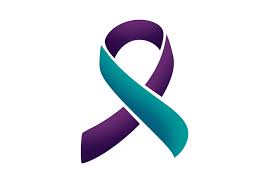
In July, the government rolled out a new crisis and suicide hotline number, a simple three-digit number that can be called or texted from any phone: “988”. This is one of many strategies to help address the growing prevalence of suicide in this country. Alarmingly, the rate of suicide increased by 30% between 2000 and 2020, and is the 12th leading cause of death in this country. When looked at together with the exponential increase in accidental overdose deaths from the opioid epidemic, experts are using the term “deaths of despair” to name what has become a true public health emergency in mental health.
These numbers are disturbing on many levels; we might ask “what is causing this” and “how do we stop it” – and both are good and complex questions. One initial thing to do is start to discuss suicide more openly, and bring it out of the shadows, to reduce stigma and shame that surrounds it, and help people known what to do if they’re struggling.
The numbers don’t do justice to the magnitude of the pain felt by those considering suicide, or by those left behind in the aftermath of suicide. “Somebody loves us all” wrote Elizabeth Bishop in her poem, and this simple truth is often elusive for those in a moment of suicidal crisis. In moments of suicidal crisis, a person’s thinking can be very different – imagining, for example, that others may be better off without them, or wishing to reunite with loved ones who have passed on. It’s a state of mind often characterized by intense hopelessness and despair, and a wish to escape incalculable emotional pain and turmoil.
Although some people struggle with suicidal thinking over long periods of time, suicidal crises tend to be intense and brief, and respond well to intervention. A long-term follow-up of people who had “near miss” suicide attempts on the Golden Gate bridge, for instance, showed that the vast majority of those individuals did not go on to complete suicide at a later point in time. In these moments of acute risk, seeking professional help from an emergency room, first responder, and often inpatient mental health admission are important first steps.
People often say that “if someone wants to kill themselves, they will”. This is not true. Of course, we can’t control other people’s behavior, and it’s natural to feel helpless when tragedy strikes. However, the evidence shows that if we can intervene quickly in moments of suicidal crisis, this can be an effective way of helping people through it, and on to a better path and another day. Every day, many who “really wanted” to die find hope and a new way to live. Even in the darkest times and situations, there is hope and help available.
If you or someone you know is thinking about suicide, it’s important to reach out and ask for help. This is not a problem to be ignored or kept in secret. The new 988 crisis number is something that anyone can and should use, if they’re having suicidal thinking or are otherwise in a mental health crisis. If you have trusted friends or family, medical professionals like a family doctor, community members, or others who care about you, please reach out and share what’s going on. If you don’t know where to turn and are worried about your safety, you can seek help in your local emergency room, where people are trained to assess your needs in a contained, safe setting. Mental health treatment, from brief inpatient treatment
in moments of crisis, to ongoing work with a therapist, can help you to get through the most difficult moments. More information about suicide can be found at aspf.org.
